Xiangyu Kong
UGOD: Uncertainty-Guided Differentiable Opacity and Soft Dropout for Enhanced Sparse-View 3DGS
Aug 07, 2025Abstract:3D Gaussian Splatting (3DGS) has become a competitive approach for novel view synthesis (NVS) due to its advanced rendering efficiency through 3D Gaussian projection and blending. However, Gaussians are treated equally weighted for rendering in most 3DGS methods, making them prone to overfitting, which is particularly the case in sparse-view scenarios. To address this, we investigate how adaptive weighting of Gaussians affects rendering quality, which is characterised by learned uncertainties proposed. This learned uncertainty serves two key purposes: first, it guides the differentiable update of Gaussian opacity while preserving the 3DGS pipeline integrity; second, the uncertainty undergoes soft differentiable dropout regularisation, which strategically transforms the original uncertainty into continuous drop probabilities that govern the final Gaussian projection and blending process for rendering. Extensive experimental results over widely adopted datasets demonstrate that our method outperforms rivals in sparse-view 3D synthesis, achieving higher quality reconstruction with fewer Gaussians in most datasets compared to existing sparse-view approaches, e.g., compared to DropGaussian, our method achieves 3.27\% PSNR improvements on the MipNeRF 360 dataset.
Learning Personalised Human Internal Cognition from External Expressive Behaviours for Real Personality Recognition
Jul 31, 2025



Abstract:Automatic real personality recognition (RPR) aims to evaluate human real personality traits from their expressive behaviours. However, most existing solutions generally act as external observers to infer observers' personality impressions based on target individuals' expressive behaviours, which significantly deviate from their real personalities and consistently lead to inferior recognition performance. Inspired by the association between real personality and human internal cognition underlying the generation of expressive behaviours, we propose a novel RPR approach that efficiently simulates personalised internal cognition from easy-accessible external short audio-visual behaviours expressed by the target individual. The simulated personalised cognition, represented as a set of network weights that enforce the personalised network to reproduce the individual-specific facial reactions, is further encoded as a novel graph containing two-dimensional node and edge feature matrices, with a novel 2D Graph Neural Network (2D-GNN) proposed for inferring real personality traits from it. To simulate real personality-related cognition, an end-to-end strategy is designed to jointly train our cognition simulation, 2D graph construction, and personality recognition modules.
RA-CLAP: Relation-Augmented Emotional Speaking Style Contrastive Language-Audio Pretraining For Speech Retrieval
May 26, 2025Abstract:The Contrastive Language-Audio Pretraining (CLAP) model has demonstrated excellent performance in general audio description-related tasks, such as audio retrieval. However, in the emerging field of emotional speaking style description (ESSD), cross-modal contrastive pretraining remains largely unexplored. In this paper, we propose a novel speech retrieval task called emotional speaking style retrieval (ESSR), and ESS-CLAP, an emotional speaking style CLAP model tailored for learning relationship between speech and natural language descriptions. In addition, we further propose relation-augmented CLAP (RA-CLAP) to address the limitation of traditional methods that assume a strict binary relationship between caption and audio. The model leverages self-distillation to learn the potential local matching relationships between speech and descriptions, thereby enhancing generalization ability. The experimental results validate the effectiveness of RA-CLAP, providing valuable reference in ESSD.
REACT 2025: the Third Multiple Appropriate Facial Reaction Generation Challenge
May 22, 2025Abstract:In dyadic interactions, a broad spectrum of human facial reactions might be appropriate for responding to each human speaker behaviour. Following the successful organisation of the REACT 2023 and REACT 2024 challenges, we are proposing the REACT 2025 challenge encouraging the development and benchmarking of Machine Learning (ML) models that can be used to generate multiple appropriate, diverse, realistic and synchronised human-style facial reactions expressed by human listeners in response to an input stimulus (i.e., audio-visual behaviours expressed by their corresponding speakers). As a key of the challenge, we provide challenge participants with the first natural and large-scale multi-modal MAFRG dataset (called MARS) recording 137 human-human dyadic interactions containing a total of 2856 interaction sessions covering five different topics. In addition, this paper also presents the challenge guidelines and the performance of our baselines on the two proposed sub-challenges: Offline MAFRG and Online MAFRG, respectively. The challenge baseline code is publicly available at https://github.com/reactmultimodalchallenge/baseline_react2025
NTIRE 2025 Challenge on Image Super-Resolution ($\times$4): Methods and Results
Apr 20, 2025Abstract:This paper presents the NTIRE 2025 image super-resolution ($\times$4) challenge, one of the associated competitions of the 10th NTIRE Workshop at CVPR 2025. The challenge aims to recover high-resolution (HR) images from low-resolution (LR) counterparts generated through bicubic downsampling with a $\times$4 scaling factor. The objective is to develop effective network designs or solutions that achieve state-of-the-art SR performance. To reflect the dual objectives of image SR research, the challenge includes two sub-tracks: (1) a restoration track, emphasizes pixel-wise accuracy and ranks submissions based on PSNR; (2) a perceptual track, focuses on visual realism and ranks results by a perceptual score. A total of 286 participants registered for the competition, with 25 teams submitting valid entries. This report summarizes the challenge design, datasets, evaluation protocol, the main results, and methods of each team. The challenge serves as a benchmark to advance the state of the art and foster progress in image SR.
The Tenth NTIRE 2025 Image Denoising Challenge Report
Apr 16, 2025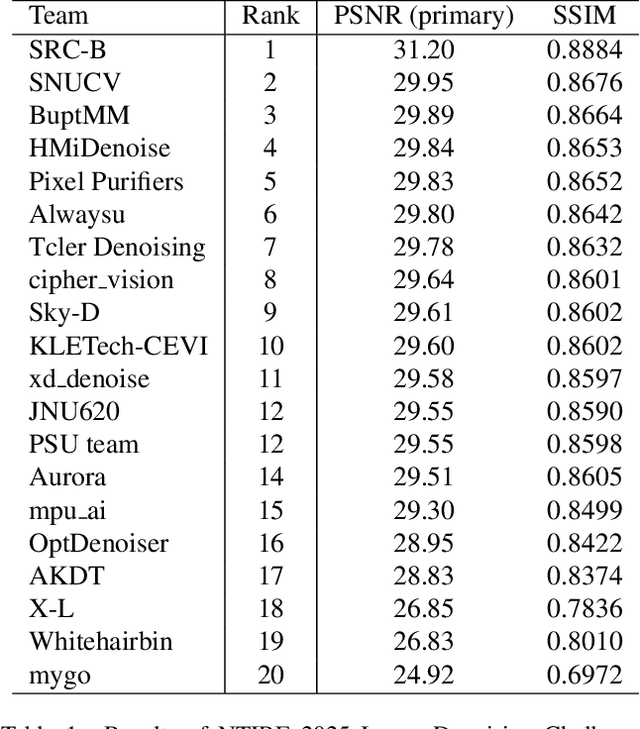



Abstract:This paper presents an overview of the NTIRE 2025 Image Denoising Challenge ({\sigma} = 50), highlighting the proposed methodologies and corresponding results. The primary objective is to develop a network architecture capable of achieving high-quality denoising performance, quantitatively evaluated using PSNR, without constraints on computational complexity or model size. The task assumes independent additive white Gaussian noise (AWGN) with a fixed noise level of 50. A total of 290 participants registered for the challenge, with 20 teams successfully submitting valid results, providing insights into the current state-of-the-art in image denoising.
Iterative Prototype Refinement for Ambiguous Speech Emotion Recognition
Aug 01, 2024



Abstract:Recognizing emotions from speech is a daunting task due to the subtlety and ambiguity of expressions. Traditional speech emotion recognition (SER) systems, which typically rely on a singular, precise emotion label, struggle with this complexity. Therefore, modeling the inherent ambiguity of emotions is an urgent problem. In this paper, we propose an iterative prototype refinement framework (IPR) for ambiguous SER. IPR comprises two interlinked components: contrastive learning and class prototypes. The former provides an efficient way to obtain high-quality representations of ambiguous samples. The latter are dynamically updated based on ambiguous labels -- the similarity of the ambiguous data to all prototypes. These refined embeddings yield precise pseudo labels, thus reinforcing representation quality. Experimental evaluations conducted on the IEMOCAP dataset validate the superior performance of IPR over state-of-the-art methods, thus proving the effectiveness of our proposed method.
Enhancing Emotion Recognition in Incomplete Data: A Novel Cross-Modal Alignment, Reconstruction, and Refinement Framework
Jul 12, 2024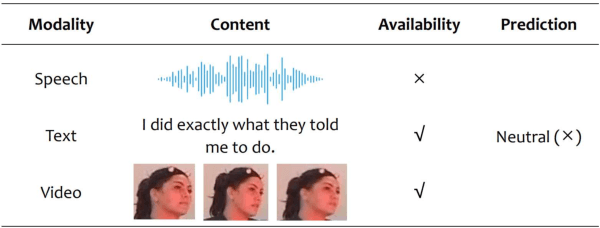


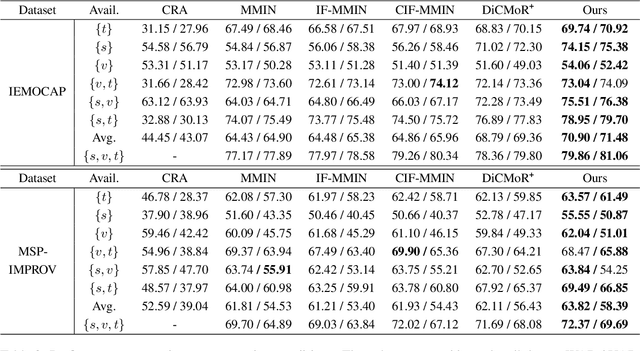
Abstract:Multimodal emotion recognition systems rely heavily on the full availability of modalities, suffering significant performance declines when modal data is incomplete. To tackle this issue, we present the Cross-Modal Alignment, Reconstruction, and Refinement (CM-ARR) framework, an innovative approach that sequentially engages in cross-modal alignment, reconstruction, and refinement phases to handle missing modalities and enhance emotion recognition. This framework utilizes unsupervised distribution-based contrastive learning to align heterogeneous modal distributions, reducing discrepancies and modeling semantic uncertainty effectively. The reconstruction phase applies normalizing flow models to transform these aligned distributions and recover missing modalities. The refinement phase employs supervised point-based contrastive learning to disrupt semantic correlations and accentuate emotional traits, thereby enriching the affective content of the reconstructed representations. Extensive experiments on the IEMOCAP and MSP-IMPROV datasets confirm the superior performance of CM-ARR under conditions of both missing and complete modalities. Notably, averaged across six scenarios of missing modalities, CM-ARR achieves absolute improvements of 2.11% in WAR and 2.12% in UAR on the IEMOCAP dataset, and 1.71% and 1.96% in WAR and UAR, respectively, on the MSP-IMPROV dataset.
Richelieu: Self-Evolving LLM-Based Agents for AI Diplomacy
Jul 09, 2024Abstract:Diplomacy is one of the most sophisticated activities in human society. The complex interactions among multiple parties/ agents involve various abilities like social reasoning, negotiation arts, and long-term strategy planning. Previous AI agents surely have proved their capability of handling multi-step games and larger action spaces on tasks involving multiple agents. However, diplomacy involves a staggering magnitude of decision spaces, especially considering the negotiation stage required. Recently, LLM agents have shown their potential for extending the boundary of previous agents on a couple of applications, however, it is still not enough to handle a very long planning period in a complex multi-agent environment. Empowered with cutting-edge LLM technology, we make the first stab to explore AI's upper bound towards a human-like agent for such a highly comprehensive multi-agent mission by combining three core and essential capabilities for stronger LLM-based societal agents: 1) strategic planner with memory and reflection; 2) goal-oriented negotiate with social reasoning; 3) augmenting memory by self-play games to self-evolving without any human in the loop.
MIPI 2024 Challenge on Few-shot RAW Image Denoising: Methods and Results
Jun 11, 2024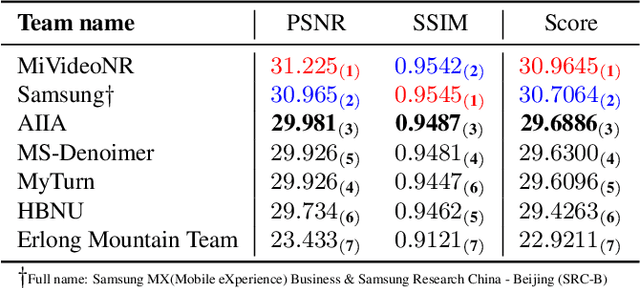
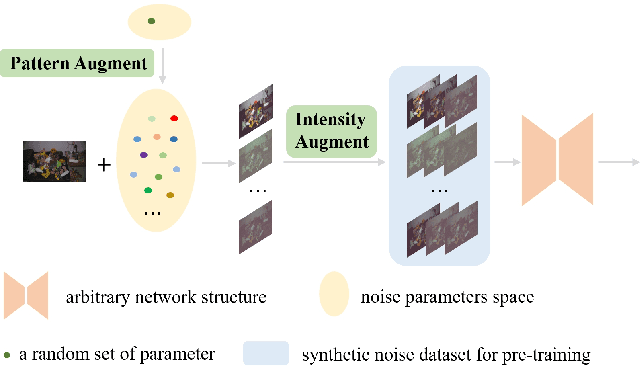


Abstract:The increasing demand for computational photography and imaging on mobile platforms has led to the widespread development and integration of advanced image sensors with novel algorithms in camera systems. However, the scarcity of high-quality data for research and the rare opportunity for in-depth exchange of views from industry and academia constrain the development of mobile intelligent photography and imaging (MIPI). Building on the achievements of the previous MIPI Workshops held at ECCV 2022 and CVPR 2023, we introduce our third MIPI challenge including three tracks focusing on novel image sensors and imaging algorithms. In this paper, we summarize and review the Few-shot RAW Image Denoising track on MIPI 2024. In total, 165 participants were successfully registered, and 7 teams submitted results in the final testing phase. The developed solutions in this challenge achieved state-of-the-art erformance on Few-shot RAW Image Denoising. More details of this challenge and the link to the dataset can be found at https://mipichallenge.org/MIPI2024.
 Add to Chrome
Add to Chrome Add to Firefox
Add to Firefox Add to Edge
Add to Edge